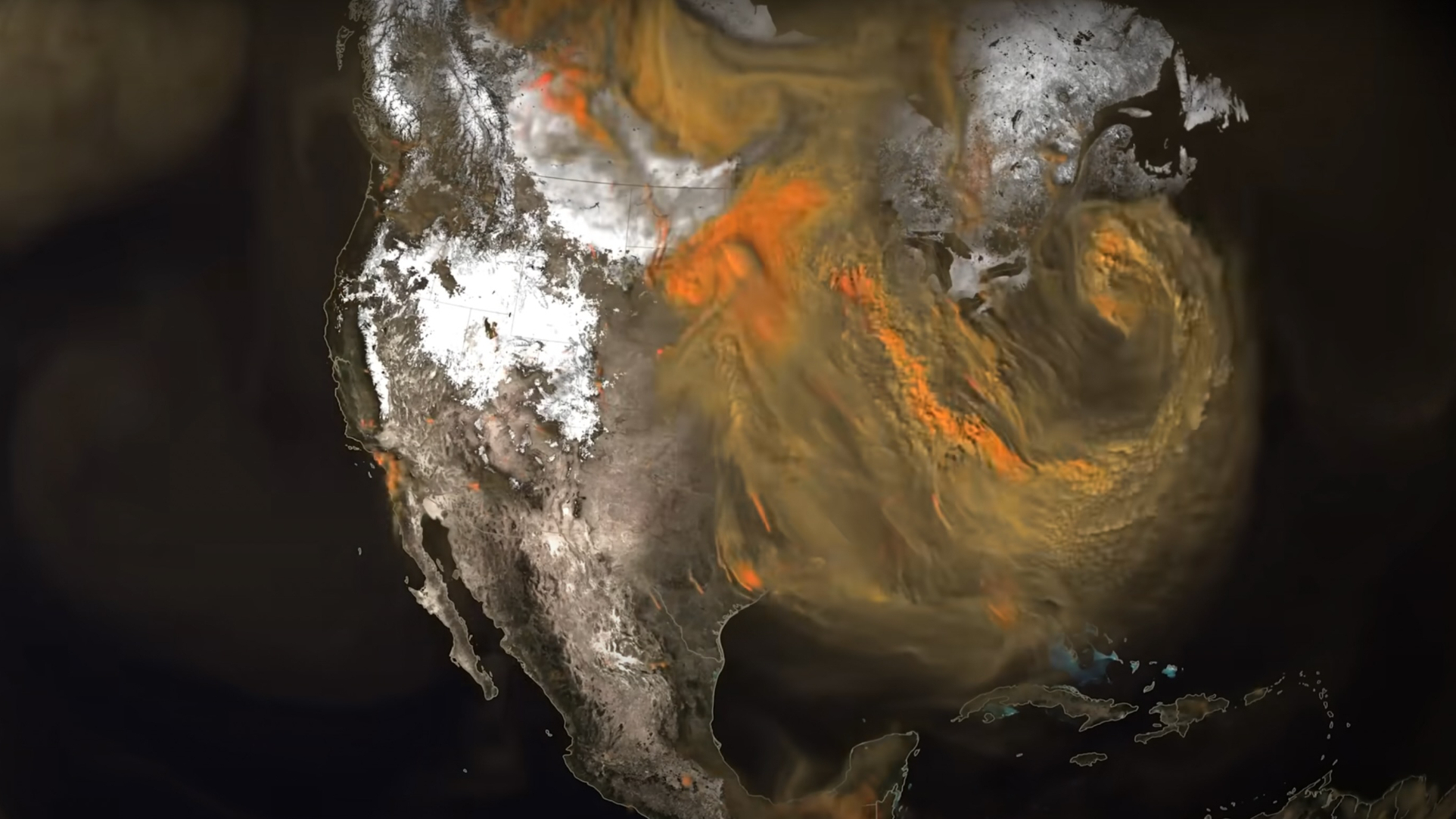
One of the best things about satellites is the fact that they can give us a view of Earth that only astronauts can see with their own eyes.
As beautiful as satellite images of our planet might be to look at, however, they're far more than just a pretty picture — they're crucial for scientific research.
Take, for instance, this utterly mesmerizing video by NASA's Scientific Visualization Studio, which shows orange plumes erupting from the surface of Earth and swirling around the planet. Mesmerizing, yes, but ultimately concerning — these plumes illustrate how carbon dioxide entered and moved through Earth's atmosphere from January 2020 to March 2020.

Created using NASA Goddard's Goddard Earth Observing System (GEOS) weather model — which is 100 times higher-resolution than standard weather models — this visualization uses billions of data points observed from both space (for instance, from NASA's Terra and Suomi National Polar-orbiting Partnership satellites) and land.
While the model normally analyzes weather systems, climate scientists suggested using GEOS to look at carbon dioxide. "We had this opportunity to say: Can we tag along and see what really high-resolution CO2 looks like?" Goddard climate scientist Lesley Ott said in a statement. "We had a feeling we were going to see plume structures and things that we've never been able to see when we do these coarser-resolution simulations."
If you take a look at the video, you'll see those plume structures are indeed highly visible — they come from a variety of sources, from power plants to wildfires to cities. You might also notice a pulsing rhythm to the plumes.
For specific plumes emanating from fires, the pulses are due to daytime flare-ups, which typically decrease overnight. But on a global scale, you're essentially seeing plants breathing. During the day, Earth's plants absorb carbon dioxide during photosynthesis, but at night, when photosynthesis does not occur, they "inhale" oxygen and "exhale" carbon dioxide, just like animals.
You'll also notice that some of the carbon dioxide swirls and moves around the globe — this shows how weather disperses the gas throughout the atmosphere, ultimately creating something of an insulating layer that traps heat. Our carbon dioxide emissions are a large driver of climate change, specifically the planet's rising average temperature.
By studying carbon dioxide through such high-resolution models, climate scientists can better predict climate trends and develop strategies to mitigate its adverse effects. "As policymakers and as scientists, we're trying to account for where carbon comes from and how that impacts the planet," said Ott. "You see here how everything is interconnected by these different weather patterns."




!["[T]he First and Fifth Amendments Require ICE to Provide Information About the Whereabouts of a Detained Person"](https://images.inkl.com/s3/publisher/cover/212/reason-cover.png?w=600)


